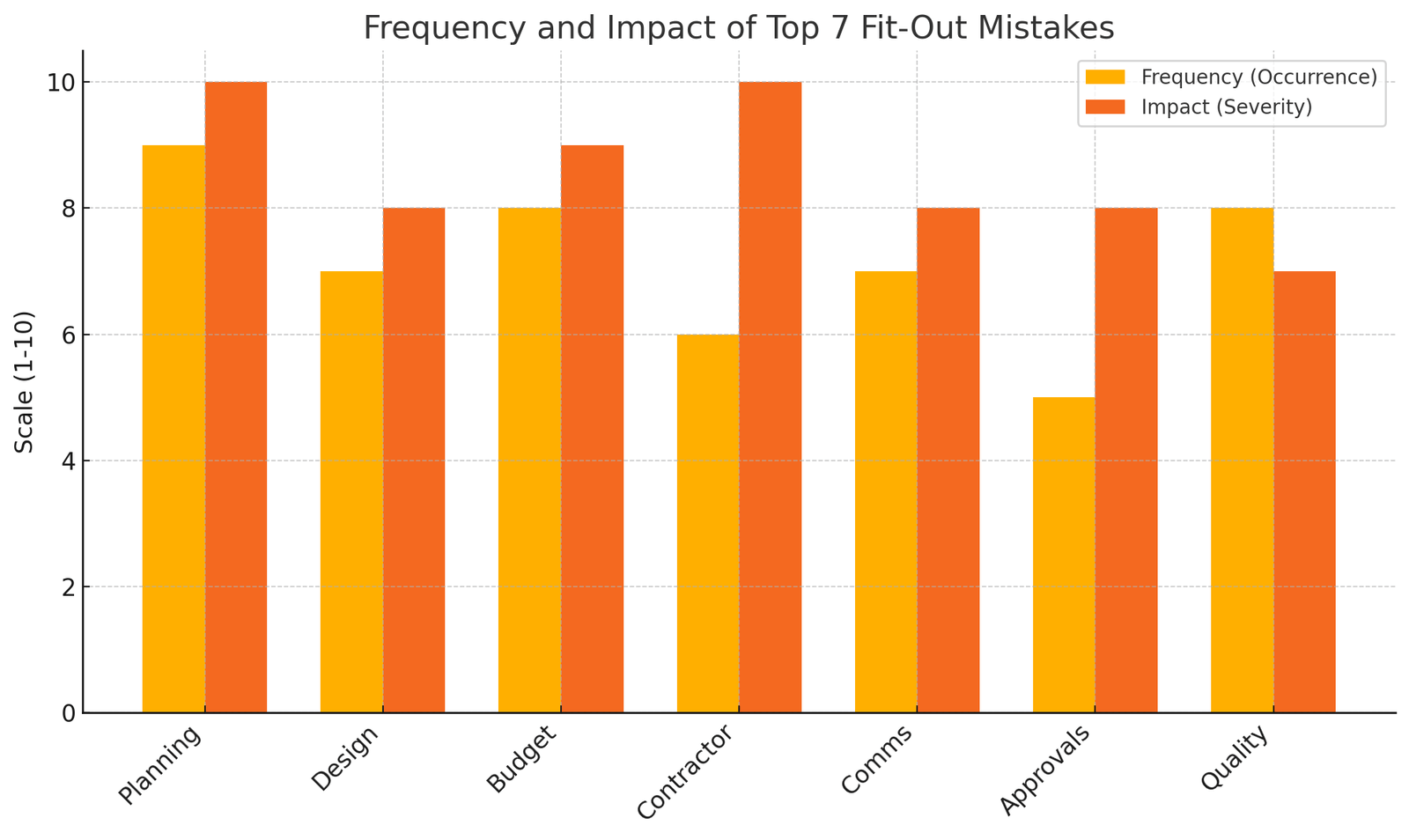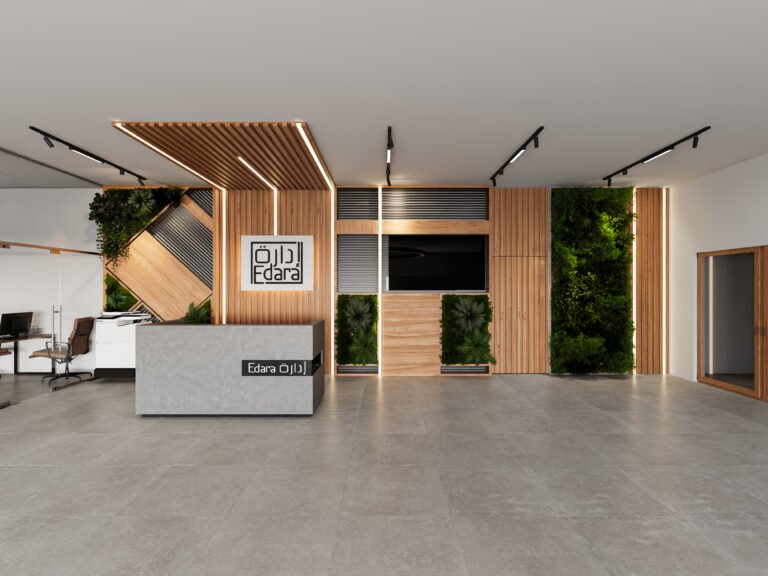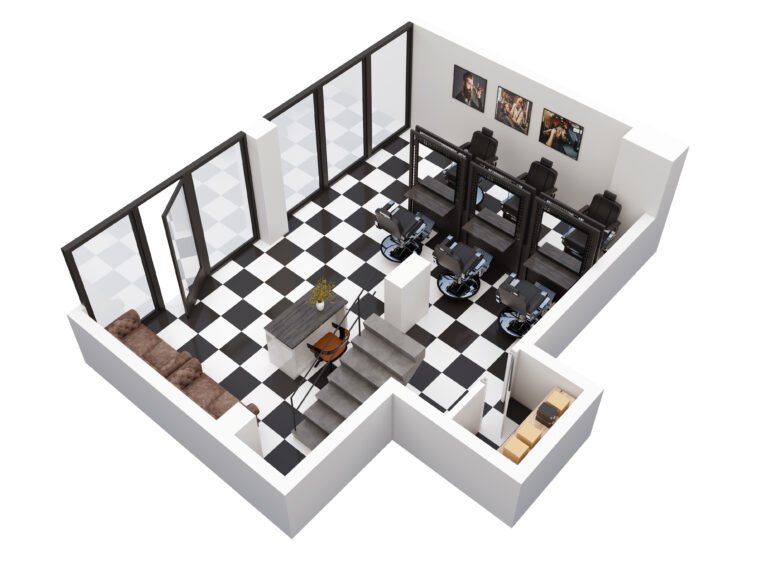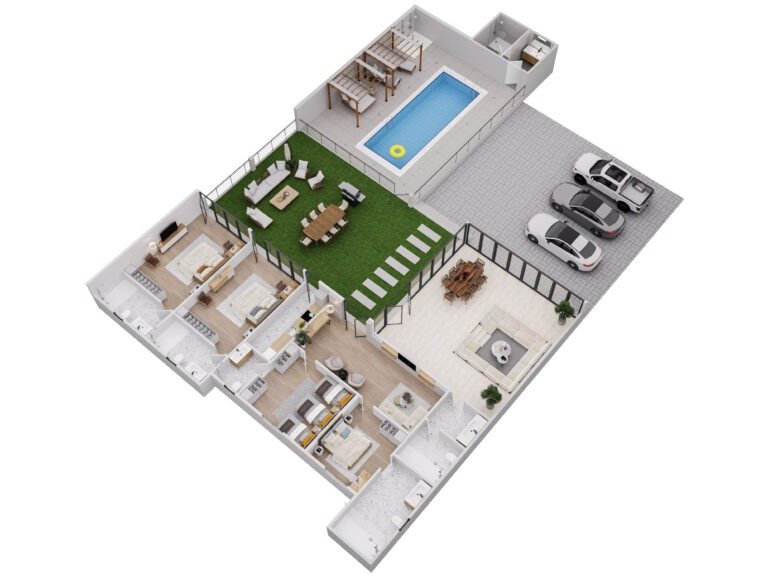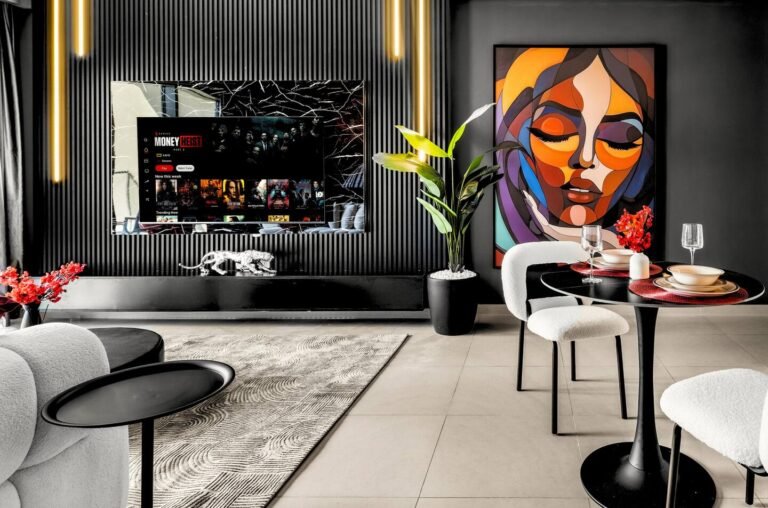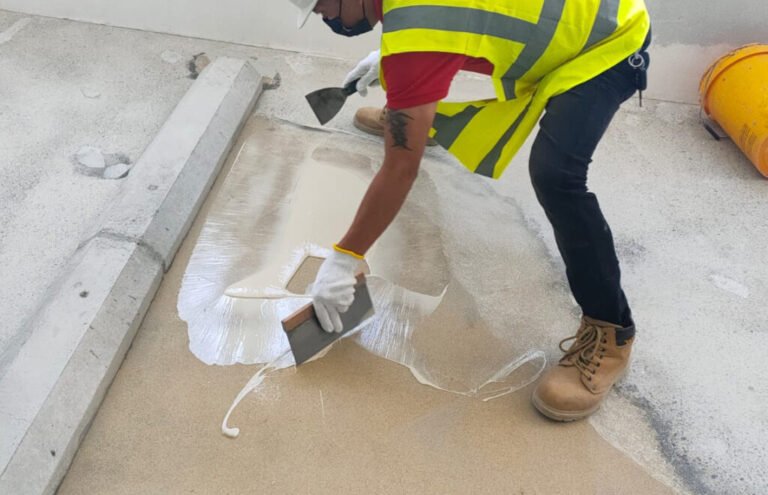Top 7 Interior Fit-Out Mistakes Property Developers Make (And How to Avoid Them)
Embarking on an interior fit-out project in the UAE – whether it’s an office fit-out in Dubai or a retail space renovation – is an exciting venture. However, property developers, project managers, and real estate investors often run into common pitfalls that can turn a dream project into a costly headache. From rushed planning to cutting corners on quality, these mistakes can derail timelines and budgets in any interior fit-out UAE project. In this article, we’ll explore the top seven interior fit-out mistakes developers make and how to avoid them. By learning from these missteps, you can ensure your next project runs smoothly and delivers the results you envision.
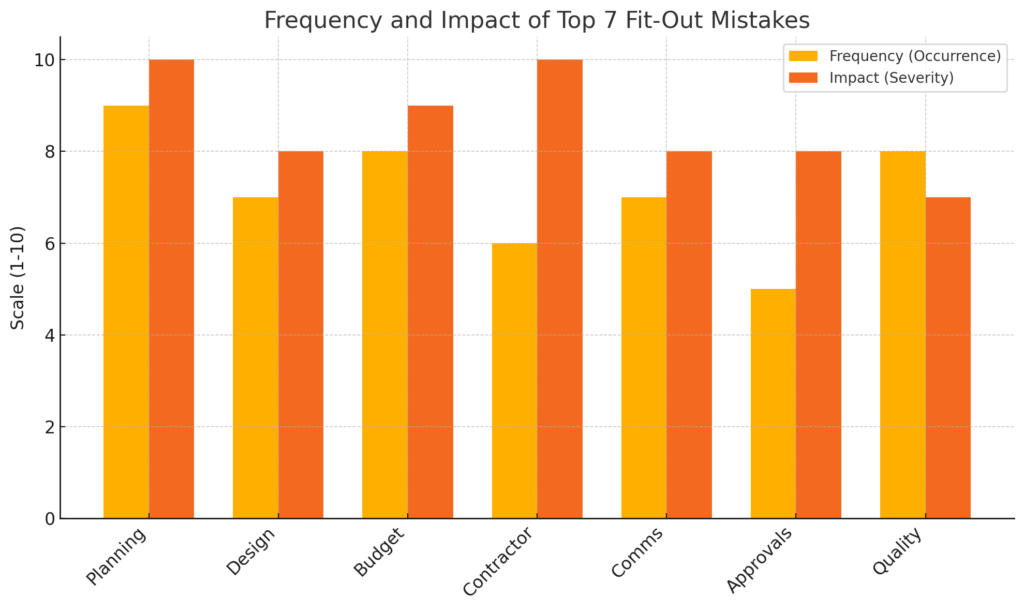
Graph: Frequency and impact of the top 7 fit-out mistakes. Higher bars indicate greater frequency or severity.
1. Skipping the Planning Stage (Rushing Through Planning)
One of the most frequent mistakes is rushing through the planning and design stage. In the eagerness to start construction, developers may skip detailed planning – only to face issues later. Hurrying this phase “will result in a shoddy fit-out, wasting both money and time” (8 Fit-Out Mistakes You Should Avoid). Inadequate planning can lead to design changes mid-project, structural surprises, and even regulatory roadblocks that could have been foreseen. Good planning isn’t just about blueprints; it includes space layout, mechanical/electrical plans, material selection, and scheduling. Skipping these details often means unforeseen delays and costs down the line.
How to avoid it: Take the time to develop a comprehensive plan before any demolition or build-out begins. Work with experienced design and build contractors during this stage for expertise on optimizing the space within your budget and timeline. As fit-out experts often advise, collaborating early with professionals helps “make the most of the space and budget while maintaining high quality” (8 Fit-Out Mistakes You Should Avoid). Allow for buffer time in your schedule for design revisions and approvals. In short, measure twice (or ten times) and cut once – a well-thought-out plan will save you from costly surprises later.
2. Poor Space Planning and Design Flaws
Even with a plan in place, design mistakes can happen if you don’t prioritize functionality and flow. A beautifully designed interior that’s impractical is a costly error. Dysfunctional layouts – for example, awkward office floorplans or wasted dead zones – can “strangle the flow of your workplace and kill your employees’ productivity” (Five Common Fit-Out Mistakes (And How to Avoid Them) – Horton Interiors). Similarly, copying a trendy design from elsewhere without considering your project’s unique needs can lead to a mismatch. Remember that an interior fit-out should serve its occupants: an office should reflect the company’s work style and brand; a retail or F&B outlet should cater to customer experience. Simply replicating another design because it looked good in a magazine often backfires, as it “may not produce the same atmosphere… particularly if the businesses are in different industries” (8 Fit-Out Mistakes You Should Avoid).
How to avoid it: Invest time in space planning with a professional interior designer or architect. Ensure the layout optimizes every square foot for its intended purpose – maximizing efficiency, natural light, and workflow. Keep in mind current and future needs: plan flexible spaces that can adapt to growth or new functions. Importantly, design with your brand identity or target market in mind (for instance, an office for a creative startup will differ from a corporate bank HQ). Rather than blindly following design fads, create a space that balances aesthetics with purpose. A well-planned layout that reflects your company’s personality is both unique and highly functional (Five Common Fit-Out Mistakes (And How to Avoid Them) – Horton Interiors).
3. Underestimating the Fit-Out Budget
Budget overruns are a classic pitfall in fit-out projects. Many developers underestimate costs or fail to set aside contingency funds, resulting in nasty surprises mid-project. There’s “nothing worse than an incomplete fit out,” so failing to establish a realistic budget “will lead to disaster sooner or later” (10 Office Fit Out and Refurbishment Mistakes You Need to Avoid | Contractors Direct). Common issues include overlooking the cost of permits, bespoke joinery, or high-quality finishes – or assuming the initial contractor quote is the final price without considering change orders. In some cases, cutting costs in the wrong places (cheaper materials or unqualified labor) leads to rework and maintenance that blow the budget anyway. Essentially, poor financial planning can bring your project to a halt or force unsatisfactory compromises.
How to avoid it: Develop a comprehensive budget from the outset and stick to it. Work with your contractor to itemize all foreseeable expenses, including a contingency (typically 10-15% of the project cost) for surprises. It’s wise to “keep a close eye” on the budget “through every phase of your project” (Five Common Fit-Out Mistakes (And How to Avoid Them) – Horton Interiors) – track expenses against the plan regularly. If value engineering is needed, do it strategically (e.g. choose cost-effective alternatives that don’t sacrifice safety or core functionality). Don’t forget that investing in quality work now can save money in the long run. In the UAE, consult with design & build contractors or cost consultants who have local market experience; they can provide accurate cost estimates for permits, materials, custom carpentry in Dubai, and more. Realistic budgeting upfront is key to avoiding a cash crunch mid-fit-out.
4. Choosing the Wrong Contractor or Going DIY
Selecting unqualified or cheap contractors – or attempting a DIY approach for a professional fit-out – is a mistake that can cost developers dearly. It’s tempting to go with the lowest bid or to manage trades yourself to save money. However, many owners who tried to “cut corners by trying to do it themselves instead of hiring a professional” ended up with “a bad idea – one that comes with a hefty price tag to correct” (10 Office Fit Out and Refurbishment Mistakes You Need to Avoid | Contractors Direct). Inexperienced contractors may lack the technical know-how or workforce to deliver quality work on schedule, leading to shoddy craftsmanship or major delays. You also risk poor site management – a disorganized, cluttered site can indicate deeper issues in project management (What the appearance of your jobsite says about your project). All of this ultimately wastes time and money, and can even pose safety risks. On the other hand, the right contractor brings expertise, coordination, and efficiency, ensuring the fit-out meets standards and passes inspections the first time.
How to avoid it: Do your homework when selecting a fit-out contractor. Look for reputable design and build contractors with a strong track record in the UAE, proper licenses, and positive client references. Evaluate more than just price – consider quality, experience, and reliability. It’s often worth investing in a one-stop solution where the contractor handles design, permissions, and construction, as this streamlines communication and accountability. Formalize everything in a contract with clear scope, timelines, payment schedules, and clauses for quality assurance. Remember that an expert fit-out team “will provide you with high-quality, skilled work, on time and on budget” (10 Office Fit Out and Refurbishment Mistakes You Need to Avoid | Contractors Direct) – value that far outweighs any apparent savings from a cut-rate job.
5. Lack of Communication and Coordination
Even with a great plan and team, a project can falter due to poor communication. Fit-out projects involve multiple stakeholders – developers, project managers, designers, contractors, subcontractors, landlords, and sometimes end-users. If everyone isn’t on the same page, mistakes are bound to happen. Miscommunication can lead to incorrect installations, scheduling conflicts between trades, or delays while waiting for decisions. For instance, if the MEP (mechanical, electrical, plumbing) team isn’t informed of a layout change, you could end up with lighting or AC vents in the wrong places. Horton Interiors notes that keeping all parties aligned “minimizes the chance of miscommunication and mistakes, which can lead to delays and cost overruns” (Five Common Fit-Out Mistakes (And How to Avoid Them) – Horton Interiors). In short, many on-site errors and reworks are avoidable with better coordination.
How to avoid it: Establish clear communication channels and project management processes from day one. Hold regular coordination meetings (weekly or even daily stand-ups during critical phases) with all relevant parties to review progress and next steps. Use project management tools or shared updates so that everyone – from the design team to the carpenters – knows the current plan. It’s also wise to appoint a single point-of-contact (like a project manager or a lead design-build contractor) who oversees coordination among trades. Encourage a culture where questions are asked early; it’s cheaper and easier to clarify on paper than to fix built work. By maintaining open, frequent communication, you catch issues when they are still minor and keep the fit-out running like a well-oiled machine.
6. Ignoring Permits and Regulatory Approvals
In the UAE, there are strict building codes, landlord guidelines (especially in commercial towers or malls), and government regulations for interior works. A costly mistake is ignoring these requirements or treating approvals as an afterthought. If a developer barrels ahead without the necessary permits, the project can be shut down or fined, causing huge delays. Likewise, failing to coordinate with the building owner or landlord on fit-out rules (work hours, noise, elevator use, etc.) can create conflicts. “The project’s costs and duration could be harmed if the landlord’s requirements and limits are not thoroughly understood,” as one fit-out expert noted (8 Fit-Out Mistakes You Should Avoid). For example, you might design something that violates fire safety codes, or plan work that isn’t allowed during business hours. These oversights not only jeopardize the schedule but can damage relationships with authorities and property managers.
How to avoid it: Due diligence is key. Before design finalization, research and account for all necessary approvals – from local municipality permits (like Dubai Municipality or civil defense NOCs) to building management or community approvals. Always “ensure that any building regulations or health and safety requirements are being met” (Five Common Fit-Out Mistakes (And How to Avoid Them) – Horton Interiors) in your plan. It helps to engage professionals who are familiar with UAE compliance, or consult with the landlord’s technical team early. Submit all required drawings and documents for approval well in advance, and don’t start major works until you have the green light. By respecting the process (and the people involved in it), you avoid legal troubles and keep your project on track. In short: no shortcuts here – get your paperwork in order.
7. Cutting Corners on Quality and Finishes
The final mistake on our list is compromising on quality – whether it’s using subpar materials, hiring cheap unskilled labor for finishing touches, or neglecting the finer details. While it might be tempting to save costs on fixtures or finishes, this often backfires. Choosing low-quality or mismatched materials based solely on cost can result in an interior that not only looks inconsistent or inferior, but also doesn’t stand up to wear and tear. In fact, developers who opt for the cheapest finishes find that “cheap materials may save money upfront, but they often require frequent repairs and replacements”, ultimately increasing maintenance costs and hurting the property’s value (Why Most Property Developers Are Doing It Wrong: The Design Mistakes You Can’t Afford). Examples of this mistake include paint that peels within months, flooring that cracks under heavy use, or cabinetry that doesn’t fit correctly because it was not custom-made for the space. An interior fit-out is an investment in the asset – poor quality work will be painfully obvious to tenants, buyers, and visitors.
How to avoid it: Maintain high standards for materials and workmanship from start to finish. Set a clear quality benchmark in your project specs, and don’t deviate from it without good reason. Wherever possible, use durable, proven materials suitable for the space (commercial-grade flooring for offices, moisture-resistant materials for wet areas, etc.). Engage skilled trades for specialty work – for instance, custom carpentry in Dubai should be handled by experienced carpenters who can deliver bespoke pieces that elevate your interior rather than detract from it. It’s also important to pay attention to detail in the final stages: ensure that lighting is adequate and well-placed (no dark corners), HVAC is balanced for comfort, and every finish aligns with the design vision. A “polished to perfection” execution might cost a bit more initially, but it protects your investment and reputation in the long run. In essence, quality is non-negotiable – don’t treat the final fit-out touches as an afterthought.
Summary Table: Mistakes, Risks, and Solutions
To recap, here’s a quick overview of the top seven mistakes and how to avoid them:
| Mistake | Risks & Consequences | How to Avoid |
| 1. Rushing the Planning Stage | Incomplete plans lead to redesigns, delays, and budget blowouts. | Plan thoroughly up front; involve experts early; allow time for design & approvals. |
| 2. Poor Space Design/Layout | Dysfunctional layout, wasted space, or off-brand design hurts usability and appeal. | Prioritize functional design; tailor the space to user needs and brand; plan for future flexibility. |
| 3. Underestimating Budget | Cost overruns, cash shortfalls, or halted project if funds run out. | Create a realistic budget with contingency; monitor costs closely; invest where it counts (don’t always go for the cheapest). |
| 4. Wrong Contractor/DIY Approach | Shoddy workmanship, major delays, safety issues, or project failure requiring costly fixes. | Hire reputable design-and-build contractors; vet their experience; use proper contracts; avoid DIY for complex work. |
| 5. Poor Communication | Misaligned teams cause errors, rework, and schedule slips; confusion over changes. | Establish clear communication channels; hold regular coordination meetings; use a dedicated project manager or tool for updates. |
| 6. Ignoring Regulations | Work stoppages, fines, or redesigns due to code violations; strained landlord relations. | Obtain all permits and NOCs early; consult landlord/building guidelines; adhere to local building codes and safety standards. |
| 7. Cutting Corners on Quality | Inferior finishes require repairs, reduce longevity, and lower property value or tenant satisfaction. | Use quality materials and skilled labor; insist on good workmanship (e.g. custom carpentry done right); don’t skimp on final details like lighting and fixtures. |
Final Thoughts
Interior fit-out projects in the UAE come with high expectations for quality and timeliness. By being aware of these common mistakes, property developers and project managers can steer clear of trouble and deliver exceptional spaces. The key takeaway is preparation and partnership: thorough planning, open communication, and working with the right professionals will address most of these pitfalls before they occur. Whether you’re tackling an office fit-out in Dubai or a boutique renovation, taking a thoughtful, quality-focused approach ensures your project will not only avoid costly mistakes but also stand out for all the right reasons. Here’s to building out spaces that are completed on time, on budget, and beyond your client’s expectations – every time.

